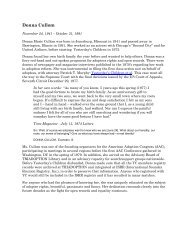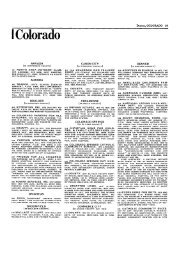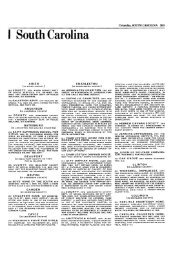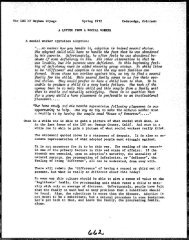Articles Book III - Pg 300-560 (Birthparents) - triadoption
Articles Book III - Pg 300-560 (Birthparents) - triadoption
Articles Book III - Pg 300-560 (Birthparents) - triadoption
Create successful ePaper yourself
Turn your PDF publications into a flip-book with our unique Google optimized e-Paper software.
of time working with the lather and the<br />
rnotlier to ro.establish thc~r parental confidence.<br />
Evontuallv, we reached an agreement<br />
with the Children's Aid Society and<br />
the courts to return the ch~ldreri to their<br />
oarents. First we returned the older<br />
daughter, then the younger daughter, with<br />
a three-month intervnl between them, so<br />
that the family could become used to<br />
having children in the houso again, and to<br />
toking care of them, and also to repeat their<br />
original experience of having the first<br />
daughter alone with them for a whilo before<br />
tho second daughter was born. The child.<br />
ren, too, had to reloarn to have confidence<br />
in their "unfit parents" being in fact fit<br />
parents again. This placement, too, was<br />
successful. The children went home, and of<br />
course, like any other family, they went<br />
through all the problems that come with<br />
growing up, going to school, getting a job,<br />
getting married, and so on. The father died<br />
while the children were still in high school.<br />
but tho mother continued to raise the children<br />
and. as far as I know. this was another<br />
case of the successful return of children to<br />
thcir parents.<br />
Tho first case of this kind that became a<br />
case in law was the Langtree case. This be.<br />
came o teaching case, not so much<br />
because of what it taught about the rights<br />
of the cliild (the right to treatment and<br />
carol, althouyh that cortarnly came into it,<br />
but because it dealt with the problems of<br />
funding. Basically, what this caso established<br />
was that a munic~palily from which o<br />
child came could be charged with tlie costs<br />
of the child's trcatment and care in a facitity<br />
outsldo that municipality. We had to lest<br />
that principle in law and we won the case.<br />
and that became the first. thin edge of the<br />
wedge in terms of childron's rights in On.<br />
tario or, more specifically, the rights of<br />
omotioriallv disturbc!d children in Ontario.<br />
I am going into this litstory in some detail<br />
because I think it is important to under.<br />
stand that you cannot work in services<br />
lor children in Ontarlo w~tliout be~ng con.<br />
corned about children's rights. You cannot<br />
deal with tlie public school systern, you<br />
carinot deal with the luvenile courts or the<br />
government of Ontario, children's agencies<br />
and hospitals without being concerned<br />
about childron's rights. It is important to bu<br />
concerrred about children's r~ghts, but tho<br />
direction your concern takes is also impor.<br />
tant. You cannot separate the cliild from<br />
his family wlien you talk about Iris rights.<br />
Yet in all tho history of family and child law in<br />
tho Western world, certainly in the United<br />
States and Canada, the lamily and child<br />
lravc been separated more and more. Our<br />
social servicos separate them, our courts<br />
separate them.<br />
The adult may be capable of surviving that<br />
kind of hurtful separation experience and<br />
may be ablo to continuo to lunction, more<br />
or less adequately, afterwards, but the<br />
child needs a family In which to grow and<br />
mature. The role of the state is not to be the<br />
parent or family for a child, but rather to be<br />
tho sponsor of programs that help families<br />
meet the needs of thcir children and them.<br />
Selves.<br />
Because this is so, separating the child<br />
from his family has been something that we<br />
have worked against over the years. We<br />
have always said, a chlld has his basic<br />
roots and you cannot ignore the existence<br />
of those roots without damage to him. The<br />
essential part that the ancestry of the clrild.<br />
the relatedness he feels to his family, plays<br />
in tho development of his uwn sense of<br />
values, of self-worth, has been described in<br />
more detail in the article on "Rootedness".'<br />
Because we have always recognized the<br />
importance of a person's roots. while we<br />
have worked lor the rights of the child, we<br />
have also worked for the right of the child<br />
to have his family and the rlght of the family<br />
to have its child: we never separated those<br />
rights. The child cannot grow and mature in<br />
a vacuum, nor can the legal statutes that<br />
spell out a child's rights nourish, care for.<br />
love or protect him.<br />
Now. what I'm getting ro is that in the<br />
Present big push w~tfi~n the legal profession,<br />
rho (ieople who are sponsoring legal<br />
r~glits for children seem to bc approaching<br />
FAMILY INVOLVEMENT

















